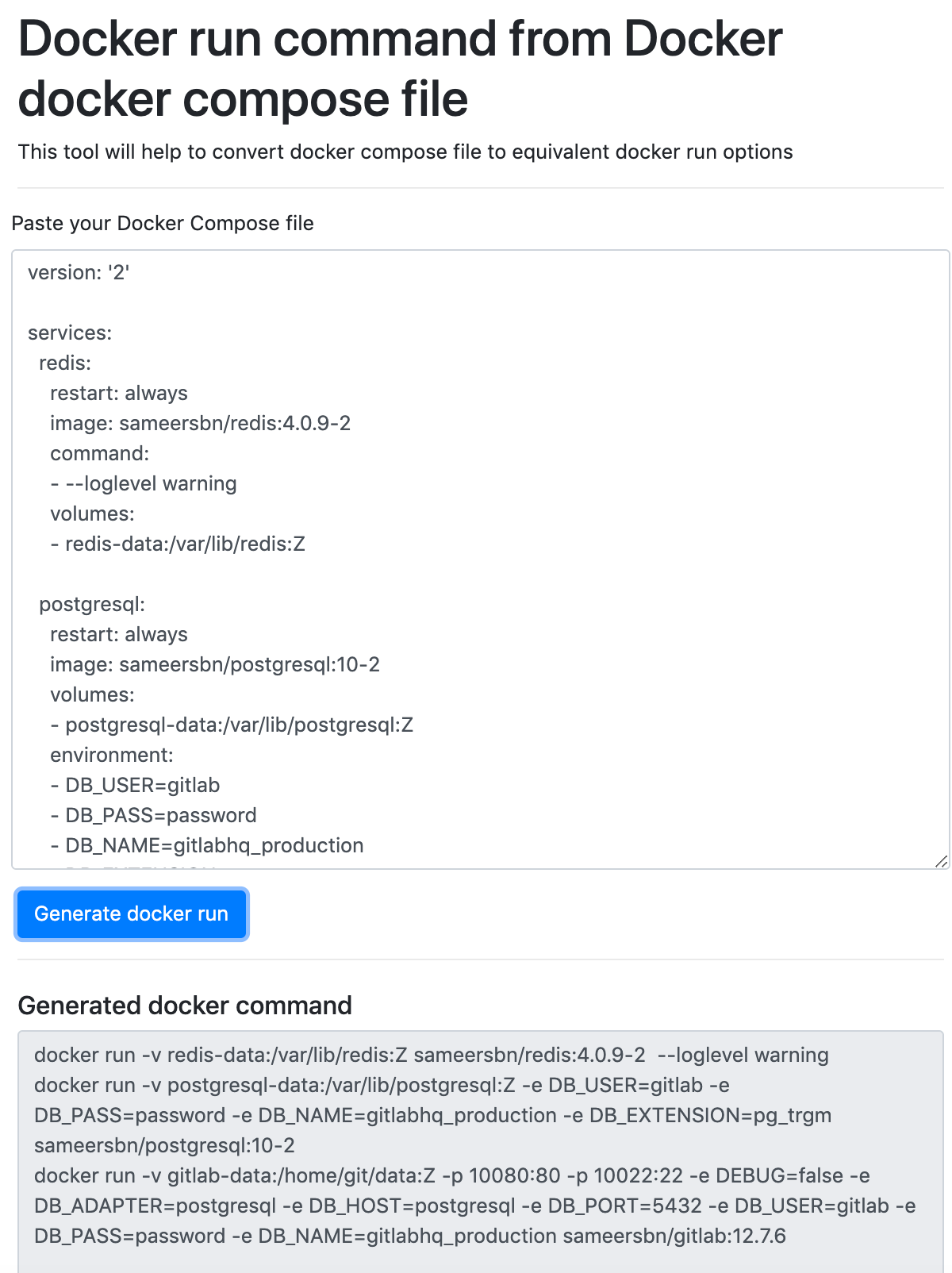

We use the docker compose up command to create the containers specified in the docker-compose.yml file: $ docker-compose up -d Note: Whenever we are running docker-compose commands for a project, we need to be working in the directory that contains that project’s docker-compose.yml file.
#Docker run image compose cmmand how to#
You can read about how to create a docker-compose.yml file here. We are also specifying two docker volumes, which will be created to store the mysql databases and the wordpress content. This file defines the docker containers we want to create, in this case we are using the mysql:5.7 and the wordpress:latest images. $ mkdir composetestįor this example I will use the following docker-compose.yml file: version: '3.3' Rather than build a custom image using a dockerfile, I will be using two docker images from the docker hub – the mysql image and the wordpress image.įirst of all, a directory needs to be created where we can store the docker-compose.yml file for the project.

The example I am going to use is to build a docker compose file that defines the containers needed to run a WordPress website. We will look at some of these commands as we work through some docker-compose examples. You can read about these commands in detail here. Version Show the Docker-Compose version information Scale Set number of containers for a service Port Print the public port for a port binding We can see all the commands available by running docker-compose –help: build Build or rebuild servicesīundle Generate a Docker bundle from the Compose fileĬonfig Validate and view the Compose fileĭown Stop and remove containers, networks, images, and volumesĮvents Receive real time events from containersĮxec Execute a command in a running container

We had a look at the version command earlier, which simply prints the version of docker-compose. Docker Compose Commandsĭocker-compose has a bunch of commands. Looks good! Now we can move on to some examples of how docker compose can be used. This can be done with: sudo chmod +x /usr/local/bin/docker-composeįinally, we can test that everything is working as it should by running: $ docker-compose -versionĭocker-compose version 1.23.2, build 1110ad01 Once downloaded, you must make the file executable. This downloaded the docker-compose tool to /usr/local/bin. On my system I did this by running: sudo curl -L "$(uname -s)-$(uname -m)" -o /usr/local/bin/docker-compose
#Docker run image compose cmmand install#
How to Install Docker Composeįirst of all we need to grab the software. To start, let’s have a look at how we can install Docker Compose on a linux docker host.


 0 kommentar(er)
0 kommentar(er)
